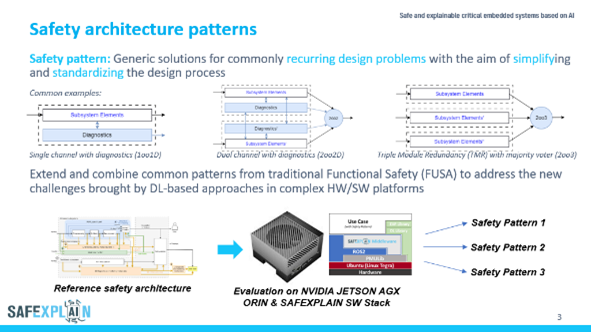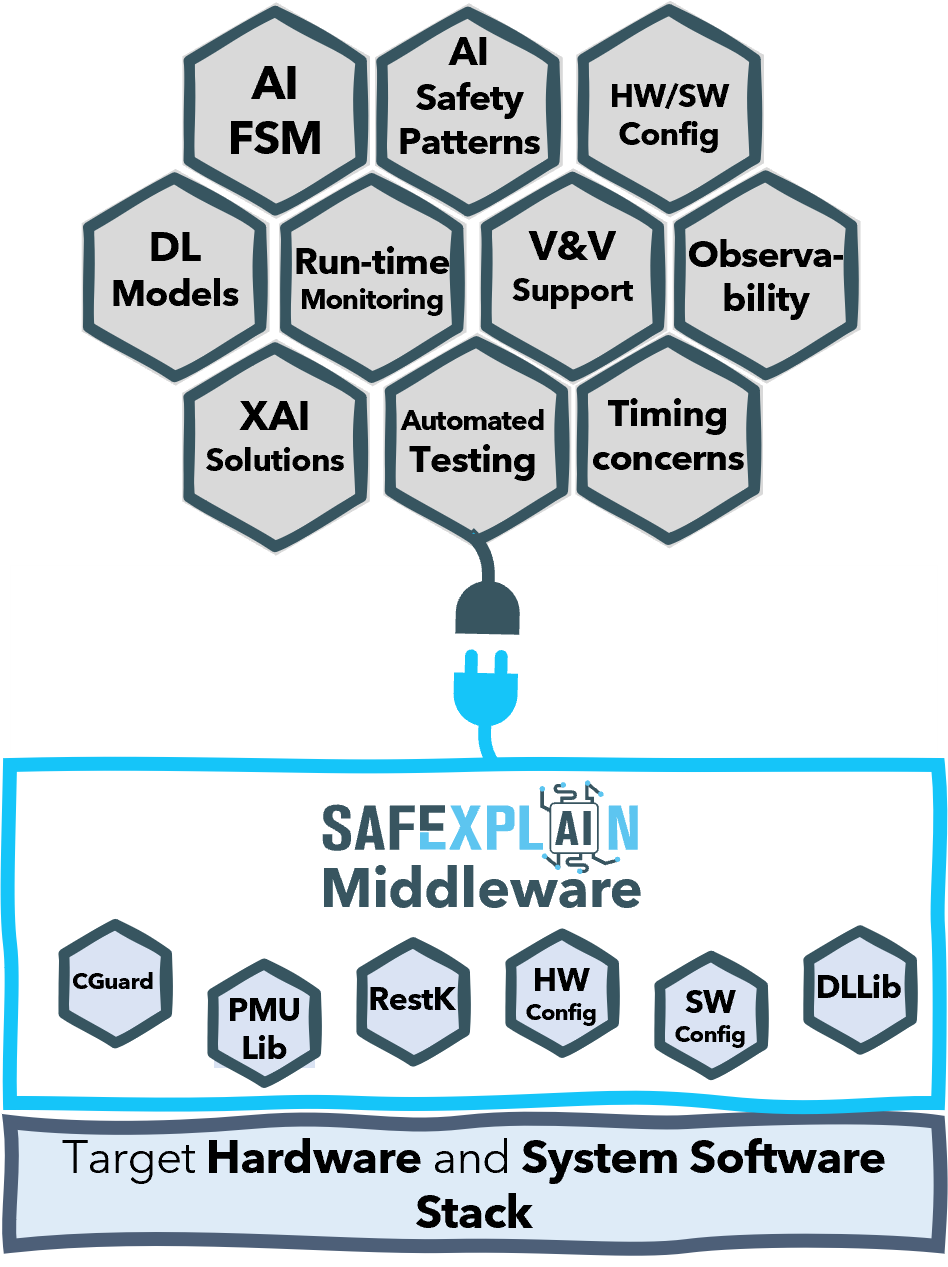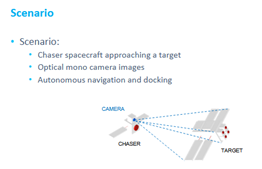
On 12 May 2025, the SAFEXPLAIN consortium presented its latest results to representatives of several aerospace and embedded system industries including Airbus DS; BrainChip, the European Space Agency (ESA), Gaisler, and Klepsydra, showcasing major strides in making AI safe and certifiable in critical autonomous embedded systems.
The presentation was well received and complimented for its holistic approach that considers all aspects of integrating AI into safety critical systems. Industry representatives mentioned the relevance of the presentation given their interest in integrating the right AI technologies for activities like docking, computer vision and more and for developing robust certification processes that can be developed without disrupting the current Validation &Verification (V&V) cycle. This feedback on the SAFEXPLAIN’s results is especially valuable given the important roles these companies play in the space sector and their expert perspective on advancements for safety critical applications in the space domain.
The meeting was hosted by project partner, AIKO, space case leader and a company in the space sector providing scalable, up-to-date and user-friendly AI-powered solutions for the industry. AIKO opened the meeting by introducing the project’s role in closing the gap between AI solutions and safety culture. AIKO representative Gabriele Giordana highlighted that, “the project is paving the way for something new by bridging the gap of different industrial domains that share the same challenge of safe AI integration.”
Key meeting highlights
IKERLAN presented its AI-Functional Safety Management (AI-FSM) methodology developed in the project. This methodology guides the development process, maps the traditional lifecycle of safety-critical systems with the AI lifecycle, and addresses their interactions.
More information on the AI-FSM can be found here


Exida development followed with an overview of the project’s V&V strategy, which defines a valid method for proving the intended functionalities at the vehicle level and at the component level. The strategy considers ISO 26262 standard and ISO 21448 testing techniques. For the space case the V&V strategy has been applied to a guidance, navigation and control (GNC) technology implanted in a space vehicle.
More information on exida development’s scenario catalogues as part of the CV&V strategy can be found here.
IKERLAN introduced the reference safety architecture patterns for the adoption of DL in safety-critical systems with varying safety requirements. This topic addressed the importance of runtime safety mechanisms for dealing with random and residual systematic faults, HW/SW complexity, DL model insufficiencies and to support DL explainability.
More information on IKERLAN´s work on “Safety patterns for AI-based systems” can be found here.



RISE discussed challenges, strategies and examples of including AI in safety critical systems and making it explainable. Specifically, RISE discussed strategies and examples of using explainable AI (XAI) to reduce uncertainties and as an enabler for managing residual uncertainties.
More information on XAI can be found here.
The Barcelona Supercomputing Center highlighted the project’s platform level support and tools, including support for HW integration, a common layer for SW V&V and functional safety mechanisms, an abstraction layer for system confirmation and a reference common stack.
More information on the SAFEXPLAIN platform can be found here.


AIKO then went into detail of the implementation of the space case study, specifically describing a docking scenario, an example that proved is especially interesting for aerospace representatives. The functions under evaluation, safety needs, technology used and system integration were presented to show the value of the SAFEXPLAIN results.
More information on the space case study can be found here.
The presentation wrapped up with the unveiling of the core demo instantiated to the space domain.
More information on the core demo, coming soon!